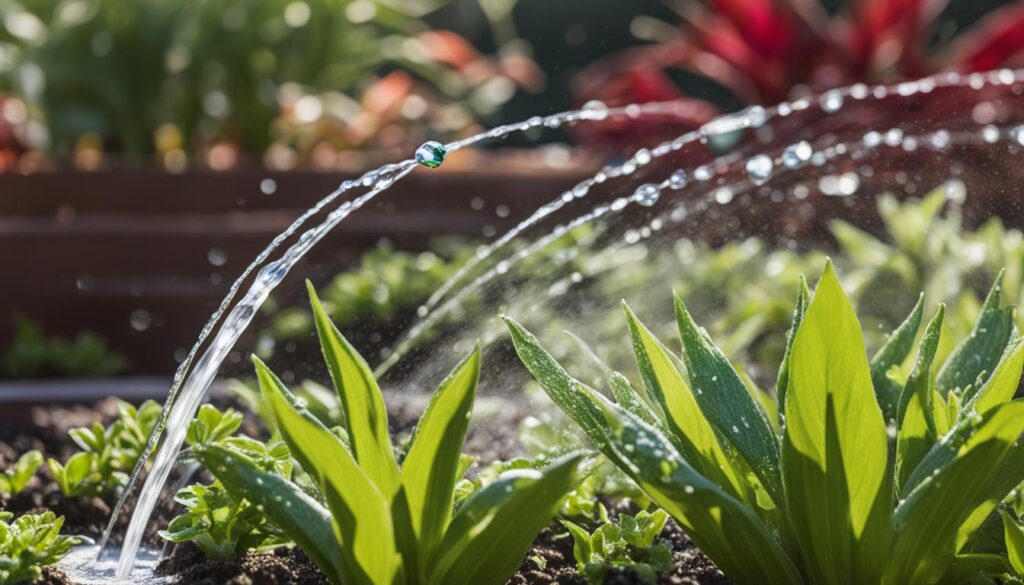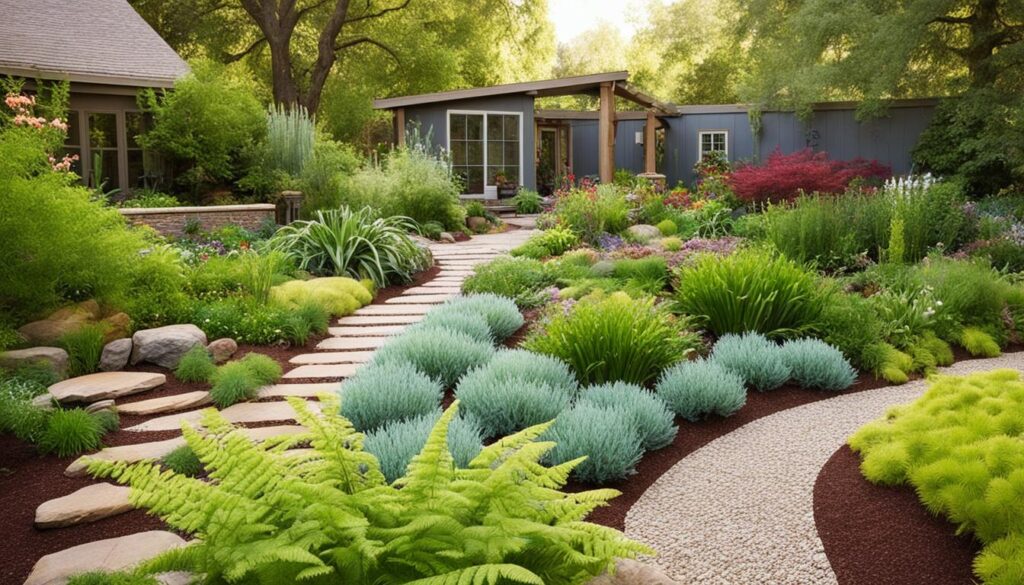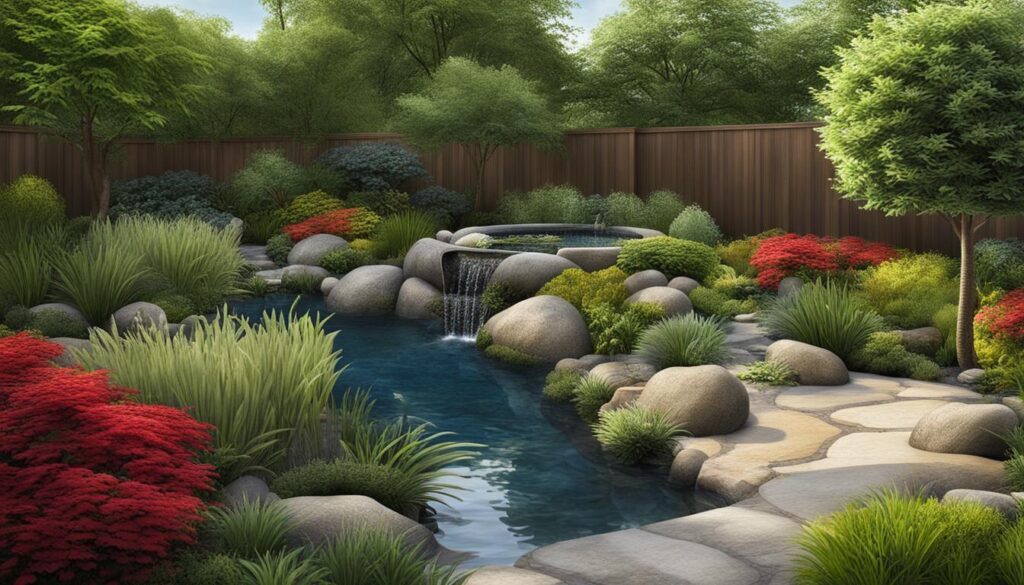Australia’s diverse climate presents a unique challenge for gardeners, particularly with the impact of changing weather patterns and prolonged periods of drought. Creating a garden that is both beautiful and resilient enough to withstand these harsh conditions is no small task. Brisbane Plant Nursery understands these challenges and is committed to providing the resources necessary for garden enthusiasts to build a thriving, water-wise landscape. Combining beauty and sustainability in one charming, accessible package, our team at Brisbane Plant Nursery is well-equipped to guide you on the journey to a successful drought-resistant garden. We offer an extensive range of drought-tolerant plants that will not only survive but also thrive in the arid conditions that many Australian regions face.
Key Takeaways:
- Water-efficient landscaping is essential in Australia due to its diverse climate and prolonged periods of drought.
- Brisbane Plant Nursery provides the resources and expertise needed to create a beautiful and resilient water-wise garden.
- Drought-tolerant plants are a crucial element of a successful drought-resistant garden, and Brisbane Plant Nursery offers an extensive range of options.
- By implementing water-saving techniques and sustainable gardening practices, you can conserve water and create a resilient landscape.
- Smart irrigation systems and proper plant selection are key factors in achieving a water-efficient garden.
Embracing Water-Saving Techniques
Water conservation is a critical aspect of drought-resistant gardening. Adopting efficient watering methods and technology can significantly reduce water waste and boost your garden’s sustainability. Consider the following practices to make the best use of water resources:
- Smart Irrigation: Utilise drip irrigation systems or soaker hoses to deliver water directly to the roots of your plants, minimising evaporation and runoff.
- Water Timing: Schedule watering during cooler hours of the day, such as early morning or late evening, to prevent water loss due to evaporation.
- Rainwater Harvesting: Invest in rainwater tanks or set up DIY rain barrels to collect and store rainwater for garden use.
- Efficient Sprinkler Systems: Opt for weather-adjusting, programmable sprinkler systems that prevent water waste by accounting for recent rainfall and evaporation rates.

Implementing these water-saving techniques will not only reduce your outdoor water usage but also contribute to overall water conservation efforts. By adopting smart irrigation systems, efficient watering methods, rainwater harvesting, and efficient sprinkler systems, you can play a vital role in preserving our precious water resources while maintaining a healthy and vibrant garden.
Selecting Suitable Plants
Choosing the right drought-tolerant plants is crucial for creating a resilient, low-maintenance garden that thrives in arid conditions. At Brisbane Plant Nursery, we offer a wide variety of drought-tolerant plants that will not only survive but also thrive in the water-scarce Australian climate.
- Succulents and Cacti: These hardy plants are excellent additions to a water-wise garden as they store water within their fleshy leaves. Examples include agaves, aloes, and echeverias.
- Native Australian Flora: Incorporating local plant species, such as grevilleas, kangaroo paws, and callistemons, into your landscape ensures they have evolved to adapt to Australia’s climate, requiring minimal water inputs.
- Mediterranean Plants: Species native to the water-scarce Mediterranean region, like lavender, rosemary, and thyme, are well-suited to drought-prone Australian gardens, adding beauty and fragrance to your outdoor space.
- Ornamental Grasses: Drought-tolerant grasses like blue fescue or zebra grass are perfect for adding texture, movement, and interest to low-water landscapes while providing habitat for beneficial insects.
By incorporating a diverse range of drought-tolerant plants, including succulents and cacti, native Australian flora, Mediterranean plants, and ornamental grasses, you can create a visually stunning garden that requires less water and maintenance.
Turning to Nature for Inspiration
When designing a drought-resistant garden, we can draw inspiration from nature to optimize water conservation and create multipurpose spaces. Implementing these natural strategies will not only enhance the beauty of your landscape but also ensure its sustainability. Let’s explore some key elements:
Creating Microclimates
Grouping plants with similar water requirements together allows for the formation of distinct microclimates within your garden. This approach makes it easier to irrigate more efficiently, as you can tailor watering schedules to the needs of each microclimate. By creating these microclimates, you are harnessing nature’s wisdom and maximizing the effectiveness of water usage.
Adding Urban Trees
Integrating shade-providing urban trees into your landscape not only adds beauty but also helps protect your underlying plants from the harsh sun. Drought-tolerant trees, such as the iconic bottle tree or Queensland’s native gum tree, provide shade and reduce water loss through evaporation. By emulating nature’s canopy, you create a cooler and more water-wise environment for your garden to thrive.
Groundcovers and Mulch
Incorporating ground-covering plants and mulch in your garden offers multiple benefits. Groundcovers like creeping thyme or native pig face not only add visual interest but also help retain soil moisture by reducing evaporation. Organic mulches, such as wood chips or straw, serve as a protective layer, regulating soil temperature and preventing water runoff. Together, groundcovers and mulch play a vital role in conserving water and improving overall soil health.
By following these natural principles and observing the microclimates, urban trees, groundcovers, and mulch, you can create a vibrant and sustainable drought-resistant garden.

Nurturing Soil Health for Sustainability
Healthy soil is an often-overlooked component of a drought-resistant garden. With the right strategies, you can enhance your soil’s water retention ability and boost your garden’s overall resilience.
- Compost Amending: Regularly incorporate organic compost into your garden to improve soil fertility and aeration, ultimately aiding in water retention and plant root development.
- Cover Cropping: Plant cover crops like legumes, grasses, or cereals during the off-season to boost soil health by adding nutrients, preventing erosion, and improving soil structure.
- Avoid Over-Tilling: Excessive tilling can lead to soil compaction and disrupt the delicate soil microorganism balance, both of which can negatively impact water retention.
By implementing these soil nurturing practices, you can create a foundation that supports a flourishing and sustainable garden.
Benefits of Compost Amending
Adding compost to your soil offers numerous benefits that contribute to a water-wise garden. Here are some key advantages:
- Enhances soil fertility, providing essential nutrients for plant growth
- Improves soil structure, promoting better water infiltration and drainage
- Increases soil’s water-holding capacity, reducing the need for frequent watering
- Supports beneficial soil microorganisms, enhancing overall soil health
To apply compost to your garden, spread a layer of compost on top of your soil or mix it in with the existing soil. Ensure a balanced mix of organic matter and soil for optimal results.
The Importance of Cover Cropping
“Cover cropping is a powerful technique that not only preserves soil health but also conserves water, making it an essential practice for a sustainable garden.” – Brisbane Plant Nursery
Cover cropping involves planting specific crops during periods of low or no plant productivity to protect and enrich the soil. Consider the following benefits of cover cropping:
- Prevents soil erosion by holding the soil in place with root systems
- Adds organic matter to the soil, improving fertility and water retention
- Sustains soil structure by reducing compaction and promoting aeration
- Suppresses weed growth, minimizing competition for water and nutrients
Choose cover crops that suit your region’s climate and purpose, such as legumes for nitrogen fixation or grasses for deep root penetration. When the cover crop reaches maturity, incorporate it into the soil through tilling or by letting the crop naturally decompose.
Preserving Soil Health with Minimal Tilling
Over-tilling can harm your soil’s health and drainage capabilities, leading to decreased water retention. By avoiding excessive tilling, you can maintain a healthy soil ecosystem. Consider the following ways to minimize tilling:
- Use hand tools or small machinery for targeted soil preparation
- Practice no-till or low-till gardening methods for reduced soil disturbance
- Add organic mulch to your garden beds to promote moisture retention and suppress weeds
- Utilize raised bed gardening techniques to minimize soil compaction
Remember, healthy soil is the foundation for a thriving garden. By nurturing your soil with compost, cover cropping, and avoiding over-tilling, you can create a sustainable oasis even in drought-prone areas.
Strategies for Water-Wise Garden Design
Incorporate sustainability into your garden design while enhancing its overall aesthetic appeal. Here are some ideas to elevate your garden space while prioritising water conservation:
- Xeriscaping: Embrace xeriscaping, a landscape design principle focused on water-wise plant selection, efficient irrigation systems, and low-maintenance groundcovers.
- Drought-Tolerant Garden Themes: Consider adopting a specific theme like a rock garden, native plant sanctuary, or Mediterranean-inspired courtyard to give your garden a cohesive and distinctive look.
- Gravel and Hardscapes: Utilise gravel, paving stones, or decorative rocks to create visually appealing pathways or features that combat soil erosion and reduce the need for water-consuming plant life.
Implementing these strategies not only ensures the conservation of water but also adds unique elements to your garden, making it a standout feature of your outdoor space.
| Advantages of Water-Wise Garden Design | Benefits |
|---|---|
| 1. Reduced water consumption | Conserves water resources and lowers water bills |
| 2. Low maintenance | Requires less time and effort for upkeep |
| 3. Increased biodiversity | Attracts a variety of beneficial insects and birds |
| 4. Enhanced aesthetic appeal | Creates visually striking and unique landscapes |
| 5. Improved soil health | Encourages the development of healthy, nutrient-rich soil |
Conclusion
Developing an exquisite and sustainable drought-resistant garden is a rewarding endeavour that demonstrates a commitment to both environmental responsibility and garden satisfaction. At Brisbane Plant Nursery, we believe that by embracing water-saving techniques, selecting suitable plants, drawing inspiration from nature, nurturing your soil, and designing for water conservation, you can create a resilient landscape capable of withstanding Australia’s challenging climate.
Water conservation plays a crucial role in drought-resistant gardening. Implementing smart irrigation systems, such as drip irrigation or soaker hoses, can minimize water waste by delivering water directly to the roots of your plants. Additionally, scheduling watering during cooler hours of the day and investing in rainwater harvesting help further reduce water loss. By adopting these practices, you can contribute to an eco-friendly landscape and make efficient use of outdoor water resources.
When it comes to selecting plants for your drought-resistant garden, choose drought-tolerant varieties like succulents, native Australian flora, Mediterranean plants, and ornamental grasses. These resilient plant options are capable of thriving with minimal water inputs, making them ideal for arid conditions. By incorporating these plants into your landscape, you not only create a visually appealing garden but also support the natural ecosystem and conserve water.
Furthermore, draw inspiration from nature’s strategies to enhance your garden’s water conservation capabilities. Create microclimates by grouping plants with similar water requirements together, as this makes irrigation more efficient. Integrate shade-providing trees into your landscape to protect underlying plants from the sun’s harsh rays. Utilize groundcovers and mulch to retain soil moisture and regulate temperature. These nature-inspired design techniques can help optimize your garden’s water efficiency and resilience.
FAQ
What is water-efficient landscaping?
Water-efficient landscaping refers to the practice of designing and maintaining a garden or landscape that minimizes water waste and promotes sustainability. It involves using drought-tolerant plants, implementing smart irrigation systems, and adopting water conservation practices.
Why is water conservation important in outdoor spaces?
Water conservation in outdoor spaces is crucial for several reasons. It helps reduce water waste, preserves natural resources, and protects the environment. Additionally, it can lower water bills and create more sustainable landscapes that are resilient to drought conditions.
What are some landscaping ideas for sustainable gardening?
Some landscaping ideas for sustainable gardening include planting native species, creating microclimates, using mulch and groundcovers, and integrating urban trees. These practices promote water efficiency, enhance biodiversity, and reduce the need for chemical inputs.
Which plants are drought-tolerant and suitable for water-wise gardens?
Some drought-tolerant plants suitable for water-wise gardens include succulents and cacti, native Australian flora, Mediterranean plants, and ornamental grasses. These plants have adapted to arid conditions and require less water compared to traditional garden plants.
How can I create microclimates in my garden?
You can create microclimates in your garden by grouping plants with similar water needs together. This allows you to water more efficiently by providing appropriate amounts of water to each plant. Additionally, microclimates can be created by strategically placing shade-providing trees or using structures to block wind and reduce water evaporation.
How can I improve soil water retention in my garden?
To improve soil water retention, you can incorporate organic compost into your garden to enhance soil fertility and aeration. Planting cover crops during the off-season can also help by adding nutrients, preventing erosion, and improving soil structure. Avoiding excessive tilling is also important to prevent soil compaction and maintain a healthy soil environment.
What is xeriscaping?
Xeriscaping is a landscaping technique that focuses on water-efficient plant selection, efficient irrigation systems, and low-maintenance groundcovers. It is designed to create beautiful and sustainable landscapes that require minimal water inputs and maintenance.
Source Links
- https://www.brisbaneplantnursery.com.au/blogs/blog/drought-resistant-gardening-a-guide-to-sustainable-landscaping-with-brisbane-plant-nursery
- https://lovelifeeat.com/nurturing-nature-a-guide-to-effortless-lawn-care-for-a-flourishing-lifestyle/
- https://sydneyau.blob.core.windows.net/landscaping-sydney/nurturing-nature-sydneys-organic-landscaping-techniques.html
